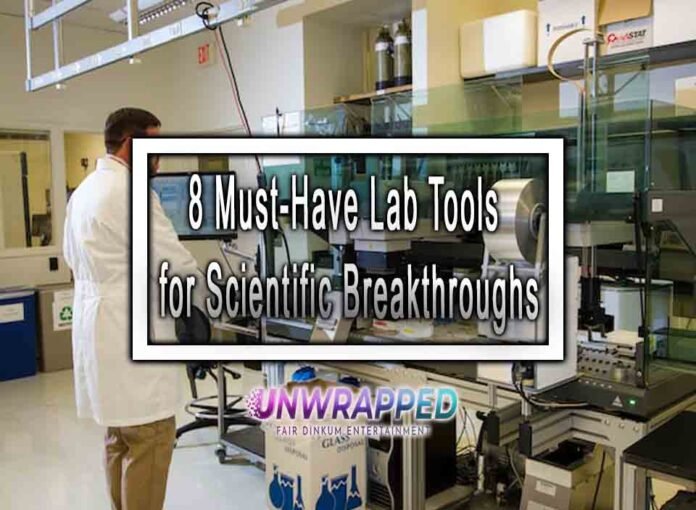Being a scientist or researcher doesn’t only mean acquiring knowledge or expertise in your field of interest. Scientific advancements and innovations throughout history have occurred when researchers did the right thing at the right time.
However, the right tools, people, and mindset also contribute to developing a much-desired scientific breakthrough. This article will focus on distributing knowledge of the right tools to help scientists pursue their paths in their respective fields. Below are a few of the tools that any scientist should have for their laboratories:
1. Safety Goggles
When conducting laboratory experiments, unwanted splashes or dust can fly around. Safety goggles are just as important as other laboratory equipment to remedy this because they protect against eye hazards in the work area. Without protective measures, accidental contact might potentially cause harmful consequences.
In most laboratories, safety goggles are deemed mandatory for researchers conducting experiments because doing so without concern for the safety of one’s eyes is detrimental to advancement.
2. Microscope
Microscopes are the first thing that comes to mind when someone thinks of “laboratory.” They are a staple of the science world, and there are different variations of microscopes, each with a unique purpose.
Microscopes are optimal for a laboratory because they allow you to observe the tiny, speck-like details that are otherwise unseen by the naked eye. The secret to a microscope’s magnification lies with the convex lenses used to bend light to make a subject seem larger than it is.
3. Incubators/Laboratory Incubators
The most common use for incubators is found in microbiology laboratories. Researchers use it to enclose samples in a controlled environment to survey their growth. With an incubator’s help, researchers can provide a simulated optimal environment for organisms where they can study their samples’ growth process.
Incubators are indispensable for organism research because they provide a controlled and ideal environment for their samples wherein the researchers can achieve their desired scenario.
4. Laboratory Gloves, Especially Nitrile Gloves
Much like the safety goggles, laboratory gloves are required by every researcher to protect against hazardous objects within the laboratory. Nitrile gloves are highly recommended for laboratory experiments because of their durability. However, they are not impervious, as chemicals can still break through. It only gives the wearer ample time to discard the contaminated glove.
When handling hazardous materials, the threat of contamination or harmful substances is always a possibility. But with laboratory gloves, it is much safer. Additionally, disposing of the gloves can save one’s life if things go wrong.
5. Centrifuges
A centrifuge is a piece of laboratory equipment whose main purpose is the separation of fluids in a mixture. With the help of a centrifuge, researchers can separate or isolate components for further research on the isolated sample.
Laboratory centrifuges help researchers separate materials by placing samples on a motor and rotating them quickly. The mixture’s components are then separated based on density; the heavier materials sink to the bottom, while the lighter ones float.
6. Laboratory Glasswares
Beakers, test tubes, flasks, and other laboratory glassware are common sightings in a laboratory because they all have differing but equally important functions. For example, the primary purpose of a beaker is to hold a liquid for later experimentation or simple containment; pipettes are used for transferring liquid drops, and Petri dishes are used for culturing cells.
The existence of laboratory glassware is indispensable to experiments as their varied uses have been present throughout the history of science.
7. Bunsen Burners
Bunsen burners are the main tools researchers use to heat materials or substances. They are commonly described as a type of gas burner that produces a safe and smokeless flame used for heat experiments. The flames produced by a Bunsen burner can be adjusted with the valves as needed, and some burners require specific types of gas sources, so selecting the correct gas is essential.
8. Chemical Fume Hoods
Chemical fume hoods are laboratory devices meant for exhaust purposes and suck air inwards, protecting researchers from potentially harmful dust, fumes, or other gases. This laboratory device has what you may call a fume hood sash, a sliding glass door shielding researchers from chemical spills or splashes.
Ventilation in a laboratory workspace is important as there is a risk of toxic fume or vapor accumulation. Once the fumes or vapor are captured, they are released from the laboratory work area so the researchers can continue undisturbed.
What are the best laboratory tools I should get?
The best laboratory tools depend on the field of study you are interested in. Often, there are specific tools for specific fields, so there is no answer as to the best laboratory tools except for the essentials.
The path to a scientific breakthrough is paved with dangers and other blockades. The researchers’ or scientists’ health and safety cannot be stressed enough. Ensuring that one has the tools they require by their side and an acceptable degree of safety is the best way to go about in the pursuit of scientific advancement.










